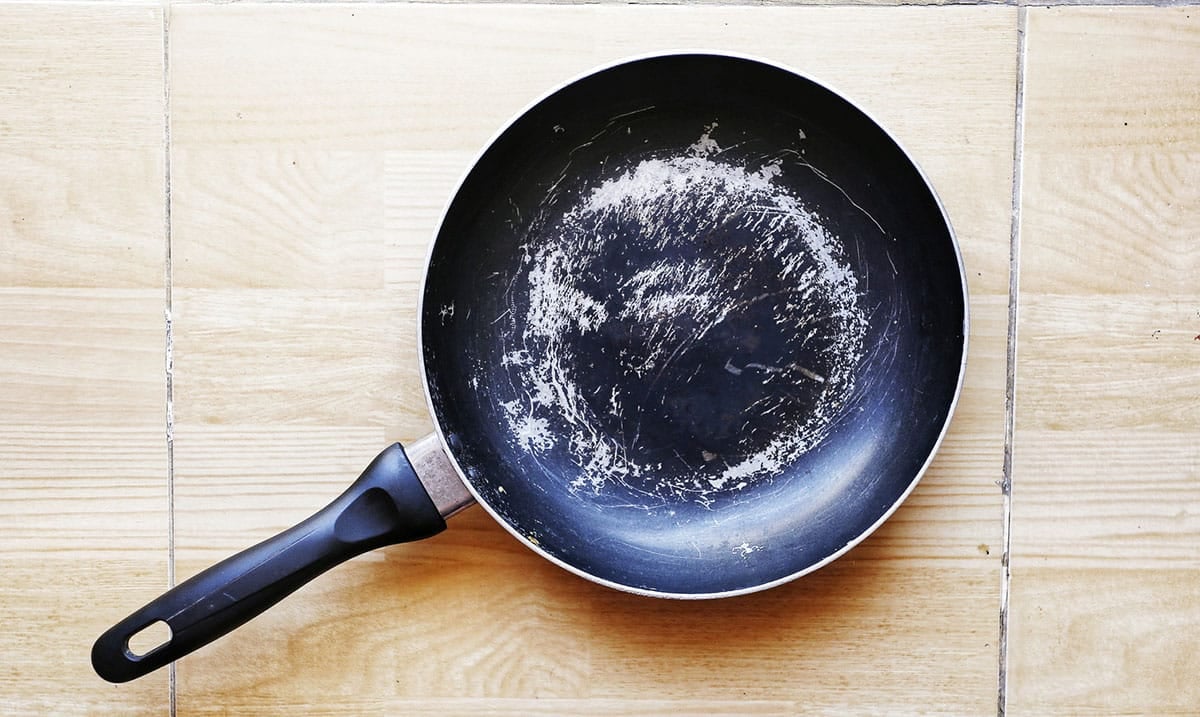I love my Teflon, non-stick pans, and the convenience they provide in the kitchen. Unfortunately, a recent study discovered that America’s favorite pan could come with some pretty hefty consequences.
In the new study, Australian researchers discovered that even the slightest crack on a Teflon-coated pan could release 9,1000 plastic particles.
We all know that over time, Teflon pans can wear down. Most of us have had at least one moment, where we began stirring around a bit too hard, only to find a slight scratch on our non-stick pan.
The study took a look at microplastics and nanoplastics, and based on their research, human beings are exposed to quite a lot of plastic particles over time. “It gives us a strong warning that we must be careful about selecting and using cooking utensils to avoid food contamination,” explains Youhong Tang, a mechanical and material engineer from Finders University in Australia.
To reach their conclusions, they used Raman imaging and algorithmic modeling to identify the release of over 2.3 million microplastics and nanoplastics. “The non-stick coating material Teflon is generally a family member of PFAS,” says Dr. Cheng Fang, one of the study authors. “Given the fact PFAS is a big concern, these Teflon microparticles in our food might be a health concern, [which] needs investigating because we don’t know much about these emerging contaminants,” he warned.
In their study, they observed and tested six different types of non-stick pots and pans, that were both new and used. To be fair, they mimicked cooking and cleaning processes, however, they didn’t use oil.
While the researchers understand how dangerous PFAS can be, they did assert that more research should be done to look into other routes of contamination and their effects. “More research is recommended to address the risk assessment of the Teflon microplastics and nanoplastics, given that Teflon is a family member of PFAS,” says Tang.

